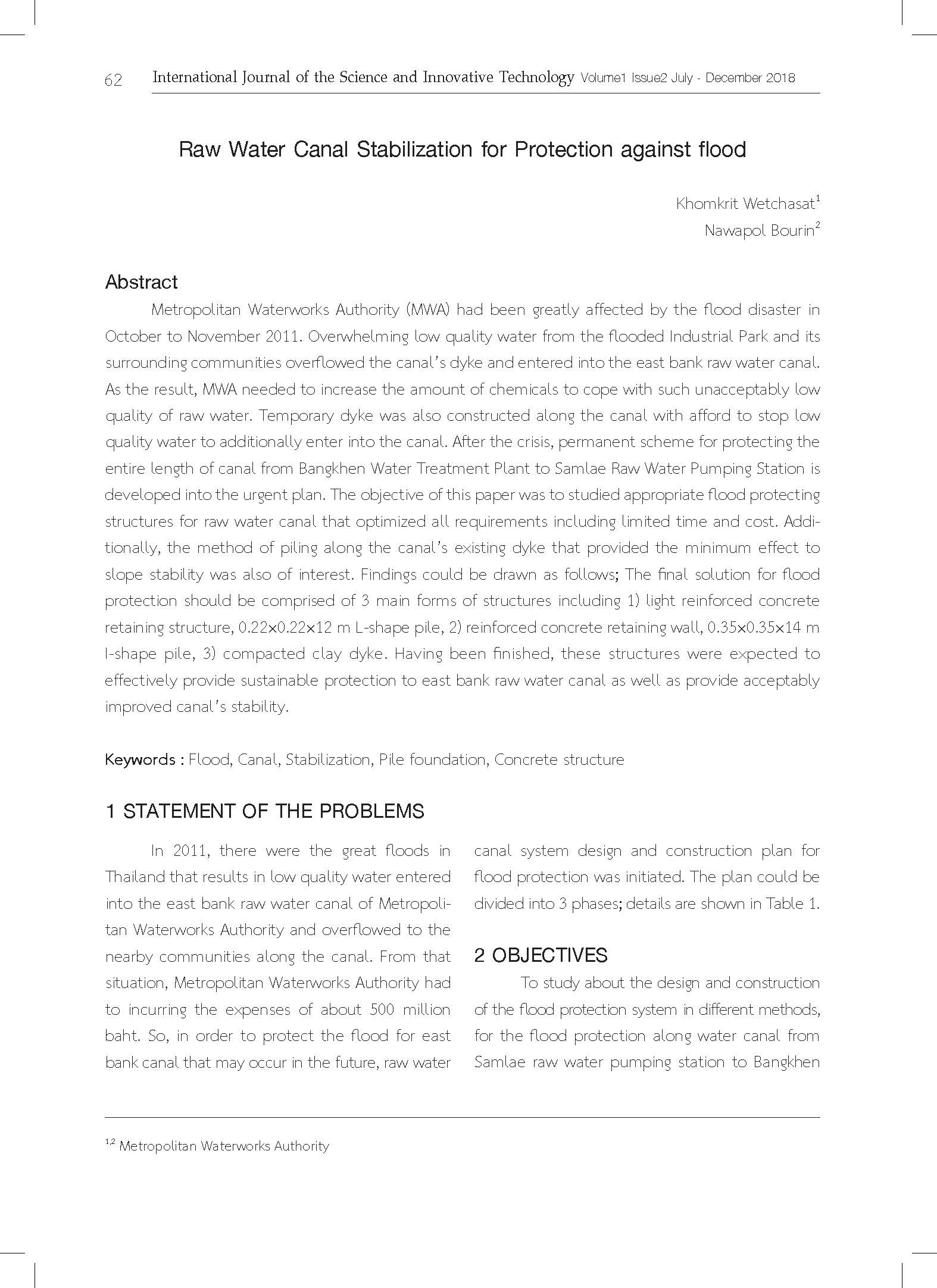Raw Water Canal Stabilization for Protection against flood
Main Article Content
Abstract
Metropolitan Waterworks Authority (MWA) had been greatly affected by the flood disaster in October to November 2011. Overwhelming low quality water from the flooded Industrial Park and its surrounding communities overflowed the canal’s dyke and entered into the east bank raw water canal. As the result, MWA needed to increase the amount of chemicals to cope with such unacceptably low quality of raw water. Temporary dyke was also constructed along the canal with afford to stop low quality water to additionally enter into the canal. After the crisis, permanent scheme for protecting the entire length of canal from Bangkhen Water Treatment Plant to Samlae Raw Water Pumping Station is developed into the urgent plan. The objective of this paper was to studied appropriate flood protecting structures for raw water canal that optimized all requirements including limited time and cost. Additionally, the method of piling along the canal’s existing dyke that provided the minimum effect to slope stability was also of interest. Findings could be drawn as follows; The final solution for flood protection should be comprised of 3 main forms of structures including 1) light reinforced concrete retaining structure, 0.22×0.22×12 m L-shape pile, 2) reinforced concrete retaining wall, 0.35×0.35×14 m I-shape pile, 3) compacted clay dyke. Having been finished, these structures were expected to effectively provide sustainable protection to east bank raw water canal as well as provide acceptably improved canal’s stability.
Article Details
References
[2] Firat, S. (2009). "Stability analysis of pile-slope system". Scientific Research and Essay, Vol.4 (9), pp. 842-852, September.
[3] Janbu, N. (1954). "Application of Composite Slip Surfaces for Stability Analysis". Proceedings of the European Conference on Stability of Earth Slope, 3: 43-49.
[4] Jeong, S., B. Kim, J. Won and J. Lee. (2003). "Uncoupled Analysis of Stabilizing Pile in Weathered Slopes". Computers and Geotechnics, 30: 671-682.
[5] Lee, C.Y., T.S. Hull and H.G. Poulos. (1995). "Simplified Pile-Slope Stability Analysis". Com-put. Geotech, 17: 1-16.
[6] Martin, G.R. and C.Y. Chen. (2005). "Response of Piles due to Lateral Slope Movement". Com-put. Structure, 83: 588-598.
[7] Morgenstern, N.R. and V.E. Pric. (1965). "The Analysis of the Stability of General Slip Surfac-es". Geotech, 15 (1): 79-93.


